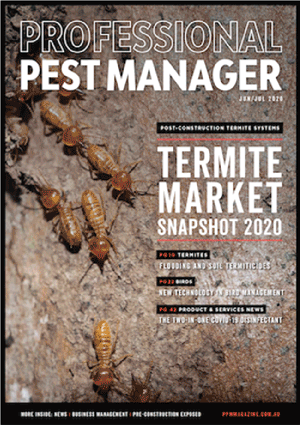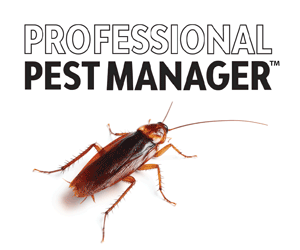A guide to booklice, a less common pest that can usually be dealt with using hygiene and exclusion methods rather than insecticides.
Booklice (psocids) are considered an occasional pest, but for customers who are suffering from a booklice infestation, it can be a bit upsetting, especially if they have had important documents or books damaged. The good news for pest managers (and their customers) is that once booklice have been identified as the problem, the steps to remedy the problem are quite straightforward.
Booklice are small, pale brown, wingless insects around 1-2 mm long. Sometimes they get confused with bed bugs due to their flattened appearance, but bed bugs are significantly larger and found in very different locations. Booklice are found in high humidity environments and feed on materials and the mould that grows on these starchy materials. This means they can be found in kitchens feeding on flour and stored grains, but as their common name suggests, they are also found on books, documents and wallpaper. This makes booklice both a stored product pest and a fabric pest.
Booklice life cycle
Although male booklice do exist, many booklice populations are entirely female and reproduce through parthenogenesis. Females will lay eggs in damp areas, sometimes singly, sometimes in groups. Due to their size and pale colour, they are very difficult to see with the naked eye. Their life cycle duration depends on the conditions. In winter, females may only lay one or two eggs, and the life cycle is completed in around three months.
However, it speeds up in the warmer months when females can lay up to 60 eggs and the whole life cycle can be completed in as little as a month. Booklice undergo incomplete metamorphosis, where the nymphs look like smaller versions of the adults. Booklice typically go through 4-6 moults before becoming an adult. Under ideal conditions, infestations can get quickly out of control.
How do booklice get into the house?
In nature they are found in humid protected locations, where they can feed on mould and organic detritus, such as on trees and shrubs, particularly under bark and in bird nests. They can be brought into buildings on pot plants (especially if sooty mould is present), but more commonly they will be brought inside in cardboard boxes, books and infested food materials.
What damage do booklice cause?
Despite their name, booklice are not true lice, as they are not parasites of animals – booklice are not harmful to humans and do not bite. Their pest status is due to the spoilage they cause to stored goods and the damage they cause to books and documents. Their presence in stored food and their droppings contaminate the food, which in most cases requires the food to be destroyed. Damage to books is generally focused on the starchy glue in the binding and the edge of the pages. Although they preferentially eat mould, if present in large numbers they will eat paper too – areas of the paper may look like the surface has been scraped.
Booklice can be spotted by eye on stored foods, particularly when present in large numbers. However, they can be more difficult to spot amongst books and documents. Perhaps a more visible sign that you have a potential problem is the presence of mould on or around the stored food or books. Clearly this is less than ideal, whether or not booklice are present.
Booklice treatment and prevention
For booklice in stored food, the first action is to dispose of the infested food. Make sure any spilled food is cleared up and any mould removed from storage areas. The essential preventative step (which will also kill booklice and mould present) is to reduce the humidity to below 50%. A surface spray treatment to storage areas can be considered but is often not necessary if contaminated food is removed, surfaces are cleaned and humidity reduced.
In commercial situations, booklice treatments are more problematic. The infested food will need to be destroyed unless it can be treated and sold for an alternative use. However, the three different species of psocids found on stored grain vary in their resistance to the different insecticides available. Regular cleaning of storage facilities and inspection of incoming material is also essential, as well as reducing humidity where possible. Controlled atmosphere techniques in closed containers (replacing oxygen with carbon dioxide) can also prove effective as part of an overall plan.
For booklice in books, the main treatment step is moving the books and documents from their current storage area to a low humidity environment to air out. Any storage areas should be well ventilated and dry.
Management of booklice is largely solved by environmental control and good hygiene/storage practices rather than insecticide treatment.


